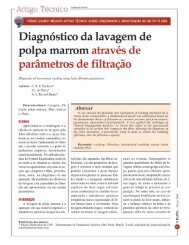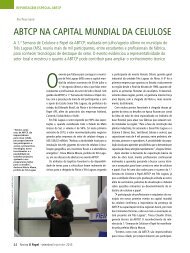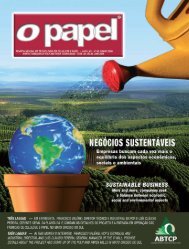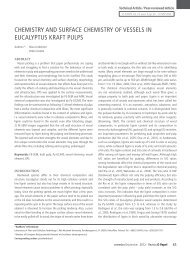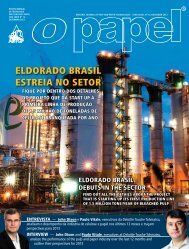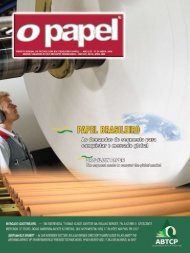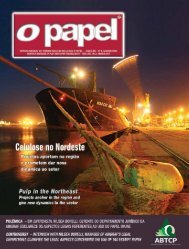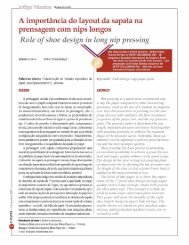PLANO NACIONAL DE RESÃDUOS SÃLIDOS - Revista O Papel
PLANO NACIONAL DE RESÃDUOS SÃLIDOS - Revista O Papel
PLANO NACIONAL DE RESÃDUOS SÃLIDOS - Revista O Papel
Create successful ePaper yourself
Turn your PDF publications into a flip-book with our unique Google optimized e-Paper software.
Technical Article / Peer-reviewed ArticleO PAPEL vol. 73, num. 4, pp. 59 - 64 APR 2012Figure 2. HexA content of filtrates versus reaction time at different temperaturestimes used in this work, the HexA removal was not complete. InTable 2 the parameters of the model for the concentration of HexAversus time are presented.As it can be seen, the maximum amount of HexA that can beremoved (DHexA∞) increased with temperature. Despite of that,the DHexA∞ obtained at 120ºC and 140ºC were very similar,which means that almost all the hexenuronic acids present inthe pulp were removed. Therefore, it is better to work at 120ºCTable 2. Model parameters of HexA content versus timeTemp. (ºC) 80 100 120 140DHexA∞ (meq/kg) 36,76 52,70 68,87 70,32rather than 140ºC, due to the pulp is less degraded and the HexAremoval is almost the same.Combining the equation models (1) and (2) for kappa numberreduction and hexenuronic acid content, the equation (3) was obtained.The correlation between kappa number and 2-furoic acid contentof the filtrates was significant (R 2 =0.9969) for the dataset fromall the experiments at various temperatures, as it can be seen inFigure 3. Additionally, the reduction of one kappa number unitcorresponded to a reduction in 9.2 meq/kg pulpof hexenuronic acid.(3)Figure 3. 2-furoic acid content of the filtrates versus kappa numberabril/April 2012 - <strong>Revista</strong> O <strong>Papel</strong>61



